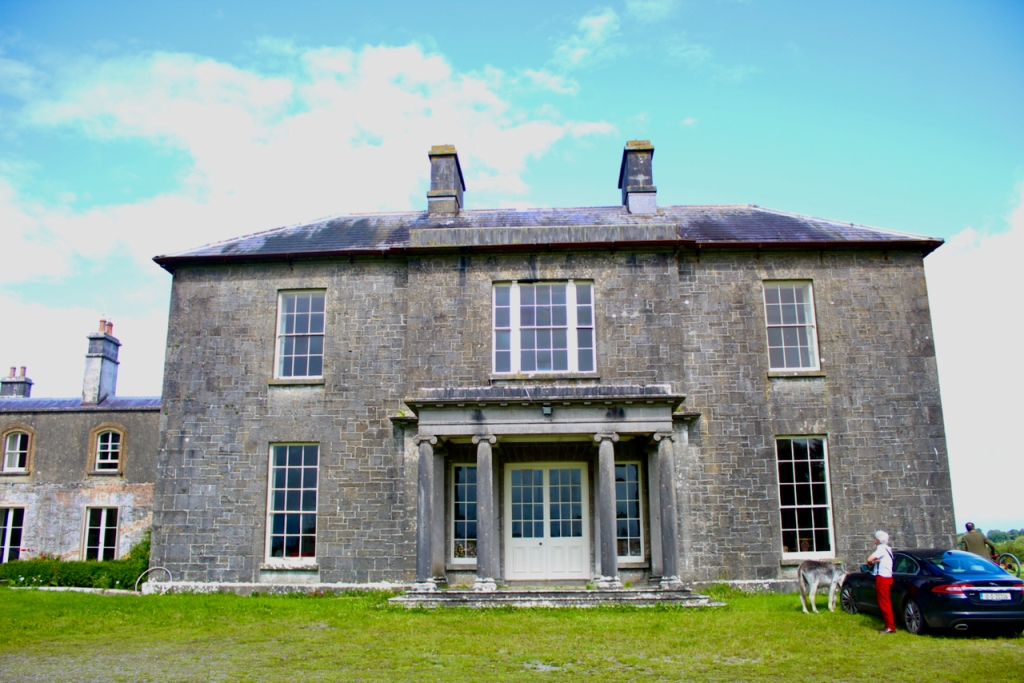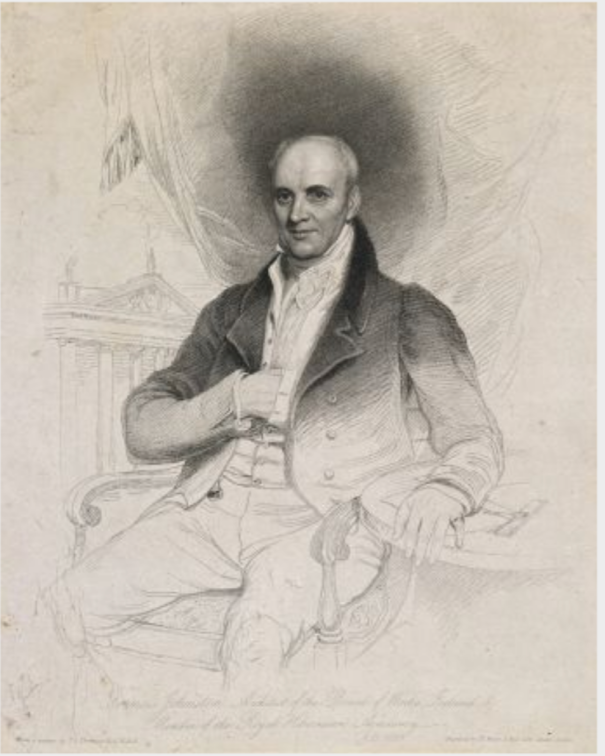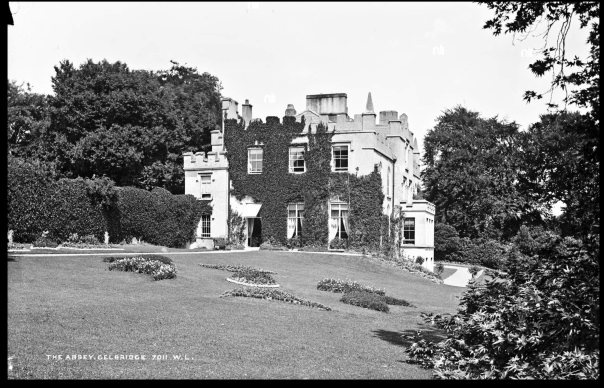contact: Peter Bland Tel: 086-2475044
Open in 2024: Aug 1-31, Sept 1-9, Dec 1-20, 9am-1pm
Fee: adult/student/OAP €8, child €4

2024 Diary of Irish Historic Houses (section 482 properties)
To purchase an A5 size 2024 Diary of Historic Houses (opening times and days are not listed so the calendar is for use for recording appointments and not as a reference for opening times) send your postal address to jennifer.baggot@gmail.com along with €20 via this payment button. The calendar of 84 pages includes space for writing your appointments as well as photographs of the historic houses. The price includes postage within Ireland. Postage to U.S. is a further €10 for the A5 size calendar, so I would appreciate a donation toward the postage – you can click on the donation link.
€20.00

donation
Help me to pay the entrance fee to one of the houses on this website. This site is created purely out of love for the subject and I receive no payment so any donation is appreciated!
€10.00

I was excited to visit Turbotstown in County Westmeath because it was owned by the Dease family, and a branch of the Baggot family married into the Dease family, though I have not established that my ancestors were related to this branch of Baggots.
It is currently owned by Peter Bland and his family, and Peter kindly welcomed us and showed us around. Peter’s grandmother was from the Dease family. When Peter purchased the property, which had been sold out of the family, it had been unoccupied, except for grain and sheep!
I only learned upon visiting that the house was designed by Francis Johnston, and has many elements characteristic of his work. The house was built around 1810 and Johnston was carrying out extensive work at nearby Tullynally for the Pakenham Earls of Longford (another Section 482 property, see my entry https://irishhistorichouses.com/2020/11/19/tullynally-castle-and-gardens-castlepollard-county-westmeath/ ). Francis Johnston also worked on Killeen Castle in County Meath and the Dease family intermarried with the Plunkett family, and Johnston built the Protestant church in Castlepollard, Peter told us.

The house is in the Greek Revival style and is composed of a large two storey three bay block, four bays on the side, the front facade’s centre bay breaking forward slightly, with a single storey Ionic portico, and a Wyatt window in the upper storey. There is a two storey service wing to one side, which the owner Peter thinks might be older than the Greek Revival block.
Along with Peter, a donkey came to meet us, walking slowly on his arthritic legs. Later the friendly donkey tried to join us by entering the French doors to the kitchen in the wing of the house!

The Dease family lived in the area since the 1270s. In Hugh Montgomery-Massingberd’s Burke’s Irish Family Records, we are told that an Edmond Dease reportedly purchased Turbotstown in 1272. [1] A James Dease of Turbotstown occured in the roll of gentry of Liberty of Trim in 1436, and a Richard Dease succeeded to Turbotstown around 1568. He was appointed Commissioner for Musters, County Westmeath.
A prominent Catholic family after the Reformation, the Dease family intermarried with the Plunketts and the Nugents who also remained Catholic. For their Catholicism and perhaps loyalty to the Stuart monarchy, the Deases lost their Turbotstown property five times but they always managed to get it back.
Richard Dease married Elizabeth Nugent. He had sons James, Thomas and Lawrence. James and Lawrence had families and the Deases of Turbotstown descended from the elder, James. Another son, Thomas (1568-1652), held the office of Catholic Bishop of Meath between 1621 and 1652. He also, Peter told us, wrote bawdy verse in Irish! He studied in Paris and was also a Rector in the Irish College in Paris.
James lived at Turbotstown and married Margaret Leicester. Their son Richard (1603-1650) was the ancestor of the Deases of Turbotstown. They had several other children. Hugh Montgomery-Massingberd tells us that Richard Dease forfeited his estates after the 1641 Rebellion, but bought them back from the Pakenhams with the proceeds of a Cavan property which had been held in trust by the Pollards of Castle Pollard.
During the time of the Penal Laws, the property was held by “Occlusive Trust” i.e. by a Protestant relative, in this case, a Nugent cousin who had converted to the Established religion.
Richard Dease married Mary Browne, and had several children, the ancestor of the Deases of Turbotstown was James (d. 1707) who lived at Turbotstown. His son Richard predeceased him in France and his son William (d. 1751) inherited. William was a Colonel in King Charles’s army, I believe – that must be Charles II’s army. William married Eleanor Nangle and they had several children. The ancestor of the Turbotstown Deases is William and Eleanor’s son Garret Dease (d. 1790).
Garret Dease married Susan Plunkett, daughter of Oliver of Rathmore Castle, Athboy, County Meath.
On his website Meath History Hub, Noel French tells us a lovely story about how Rathmore Castle came into the hands of the Plunkett family:
“Rathmore Castle and Church was built by the de Verdons, the Norman family who conquered this area. They built a church on the site of the present ruin.
“The last de Vernon Lord of Rathmore had only one child, a daughter, Matilda. Sir Christopher Cruise, then an old man held considerable property in the area and had a castle at Cruisetown. Sir Christopher succeeded in winning the hand of Matilda and married her in 1406 and thus acquired Rathmore. Cruise’s nephews regarded themselves as his heir and were very disappointed to see him marry and thus raising the possibility of a son and closer heir. The nephews decided to murder Sir Christopher and his wife. Their hired killers and attacked the couple as they walked along the avenue of Cruisetown Castle. Sir Christopher held off the attackers while his wife made a run for refuge at the castle. Sir Christopher died from his wounds before help arrived but Lady Cruise just made it to the castle before the pursuing murderers. Little did the attackers know but she was carrying her husband’s child at the time.
“Knowing she was in a dangerous situation she packed all the plate and other treasures into strong chests and sunk them in the lake in the grounds of the castle. A report was spread that Lady Cruise was ill and would not survive the night. Men were sent from Rathmore to bear her remains to the home of her father. Her coffin was taken to Rathmore and brought to the castle, but her coffin had airholes in it.
“Gathering all the Rathmore plate and placing it in the coffin Lady Cruise buried it in the graveyard. It was commonly thought for many centuries that there was treasure buried in Rathmore church. In the nineteenth century one man dug up a portion of the floor near the altar one dark night. A ghost priest with robes appeared behind him and the treasure-seeker left in quite a hurry.
“Lady Cruise fled to England with the title deeds of Rathmore and Cruisetown to escape from her husband’s “inheritors”. In London she gave birth to a daughter who was christened Mary Ann Cruise. Lady Cruise’s money and jewels were gradually eroded in her fight to prove her claim and establish her child’s rights. She lost all the cases she brought for the restoration of her property and was eventually forced to find work. The only job she could get was as a washerwoman. Mother and daughter took in washing and washed and bleached the clothes on the banks of the Thames near London Bridge.
“One day Mary Ann had to go wash on her own as her mother was ill. She started to sing a lament in Irish that her mother had composed on the loss of her estates. A passing gentleman stopped and listened to the song. Sir Thomas Plunkett, the third son of the first Baron of Killeen, understood the Irish song and indeed knew the places mentioned in the song. He approached the girl and she told him the full story. He explained that he was a lawyer and Mary Ann took him to her mother where he was shown the title deeds and other papers. Taking the case he won back Rathmore and Cruisestown castles and their estates and also won the heart and hand of Mary Ann Cruise and so the Plunketts became Lords of Rathmore. That is the legend of Rathmore.” [2]
John Baggot of Castle Bagot married Eleanor Dease (d.1843), daughter of Garret Dease of Turbotstown, and his wife Lady Susan Plunkett. John Baggot bought Castle Bagot in Rathcoole, County Dublin, which still stands. I think he was married before, to Mary (Anne) Walsh, and had daughter Anne who married Ambrose More O’Ferrall (1752-1835).

John Baggot and Eleanor Dease’s sons William Gerald Baggot (d. 1821) and James John Baggot (1784-1860) were involved with Daniel O’Connell and the fight for Catholic Emancipation. William Gerald died young, unfortunately, and James John married but had no children, so the Baggot inheritance passed through their half-sister Anne (d. 1810) who married Ambrose More O’Ferrall, of another strongly Catholic family. Ambrose More O’Ferrall went overseas and fought as a Major in the Royal Sardinian Army (1752-1835). His family was from Balyna in County Kildare. The house is now part of the Moyvalley Hotel. [3]
Eleanor Dease’s brother Gerald (1790-1854) inherited Turbotstown. He married Elizabeth O’Callaghan (d. 1846), daughter of Edmond O’Callaghan of Kilgory, County Clare. Interestingly, aforementioned James John Bagot married her sister, Ellen Maria O’Callaghan. Their sister Catherine married Thomas Browne 3rd Earl of Kenmare.
It was Gerald Dease who had the new Greek Revival house built, perhaps added on to an older house.
The interior of Turbotstown surprised us with an inner hall with a circular opening to an upper floor gallery which is toplit by an octagonal shaped lantern skylight not visible from the front of the house, the octagonal walls of the lantern composed of eight by eight panelled windows. This is a Francis Johnston feature. You can see photographs on Robert O’Byrne’s website. [4]
The staircase hall is also rather grand, the cantilevered staircase winding around in a square shape with a lovely stucco ceiling at the top, and a large arched window provides illumination.
A window detail in the main rooms indicates Francis Johnston’s attention to detail, as they slant upwards, letting in more sunlight, and there are lovely sunbursts carved into the corner timber frames. I didn’t take a photograph but they are similar to those in Rokeby in County Louth (another section 482 house, see my entry ( https://irishhistorichouses.com/2020/08/17/rokeby-hall-grangebellew-county-louth/ ). Another house by Francis Johnston is Townley Hall in County Louth.

Some of the rooms have decorative cornices, and they have lovely high ceilings. Another detail is that the door edge is slightly slanted to prevent drafts!
In the older part of the house is a chapel, still consecrated, which was built by the Dease family. Robert O’Byrnes writes that this was presumably where they worshipped prior to providing the land for the construction of a Roman Catholic church nearby.
One of Gerald Dease’s sons, Gerald Richard, went on to live in Celbridge Abbey in County Kildare, a house which when we last saw it was badly in need of repair.

Another son, Edmund Gerald Dease (1829-1904), married Mary Grattan, daughter of Henry Grattan. A son of theirs, Major Edmund James Dease (1861-1945) lived at Rath House, Ballybrittas, County Laois and married Mabel More O’Ferrall, a descendant of aforementioned Ambrose More O’Ferrall of Balyna, County Kildare, Mabel was great-granddaughter of Anne Baggot of Castle Bagot, Rathcoole.
Another son, James Arthur Dease, married Charlotte Jerningham and they went on to have many children, and lived in Turbotstown. Of the two sons, one, Gerald, didn’t have children, the other, Edmond Fitzlaurence, sold Turbotstown after his son Maurice died in 1914 in the First World War.
Peter Bland, the current owner of Turbotstown, is a descendant of Major Edmund James Dease (1861-1945) and Mabel More O’Ferrall! Their daughter Marion (1900-1969) married William Bland (1901-1963) of Blandsfort, Abbeyleix, County Laois, Peter’s grandfather. My Dad also was from Abbeyleix, but his father only moved there after his marriage in 1920. Blandsfort house was built by Blands in around 1715.

Another well-known member of the Dease family is from another branch, from Lisney or Lisanny, County Cavan. William Dease (1752-1798) was one of the founders of the Royal College of Surgeons in Ireland. At the time, surgeons were still members of the “Barber-Surgeons Guild.” The red and white stripes one sees on poles outside barber shops hearkens to this time, and represents blood and bandages! The Dictionary of Irish Biography tells us that Dease pointed out that people who trained as doctors were not taught surgery, and that they had to go abroad, as he did to France, to learn surgery. He founded the Dublin Society of Surgeons in 1780, and chaired the committee that successfully campaigned for a royal charter, which was granted in 1784, and the Royal College of Surgeons Ireland was established.
There is a prominent crack on the leg of the statue of William Dease in the College of Surgeons. Dease was sympathetic to the rebels cause in 1798 and legend has it that he heard that he was suspected of being a United Irishman. To avoid capture, he is said to have severed his femoral artery, and bled to death. This artery runs along exactly where the crack is in the sculpture! This story is told by Richard Robert Madden who wrote The United Irishmen, their lives and times. [7]
The Dease family died out, Peter told us. The last Dease, Dorothy, granddaughter of Major Edmond James Dease and Mabel née More O’Ferrall, grew up in Rath House, Ballybrittas, County Laois, and married Major George Geoffrey Robert Edward de Stacpoole, 6th Duc de Stackpoole, a Papal Duke. They lived in Errisbeg House in County Galway, now a bed and breakfast run by the 7th Duke and his family. [6]
A branch of the Bland family used to own Derryquin Castle in County Kerry, now the hotel Parknasilla. The hotel website tells us “The Blands of Derryquin Castle Demense were a Yorkshire family, the first of whom Rev. James Bland came to Ireland in 1692 and from 1693 was vicar of Killarney. His son Nathaniel, a judge and vicar general of Ardfert and Aghadoe obtained a grant of land in 1732 which would later become the Derryquin Estate. Derryquin Castle was the third house of the Blands on this land but it is not known when it was first constructed, its earliest written mention being in 1837, however it was indicated some decades earlier by Nimmo in his 1812 map.” [5]

It’s wonderful that a descendant of the Dease family is now living in Turbotstown and has renovated it back into a family home.
[1] p. 132, Montgomery-Massingberd, Hugh (ed.) Burke’s Irish Family Records. London, U.K.: Burkes Peerage Ltd, 1976.
[2] https://meathhistoryhub.ie/rathmore/
[3] I wrote a little more about this family in my entry for The Old Glebe in Newcastle-Lyons, County Dublin, https://irishhistorichouses.com/2019/12/31/the-old-glebe-newcastle-lyons-county-dublin/
In August 2012, we visited the Catholic church of St. Finian’s in Kilamactalway, near Newcastle-Lyons, to see the baptismal font donated by Ellen Maria Bagot née O’Callaghan in memory of her husband James John Baggot, who died in 1860 and who had lived in Castle Bagot in Rathcoole/ Kilmactalway.
[4] https://theirishaesthete.com/tag/turbotstown/
[5] https://www.dib.ie/biography/dease-william-a2491
[7] https://parknasillaresort.com/history/story-derryquin-castle/